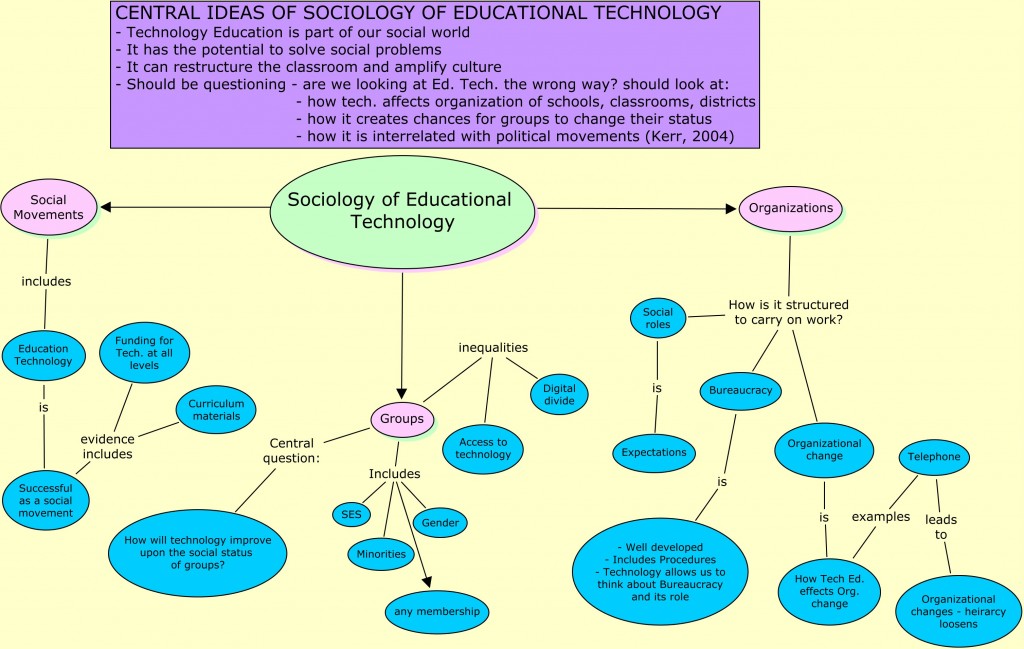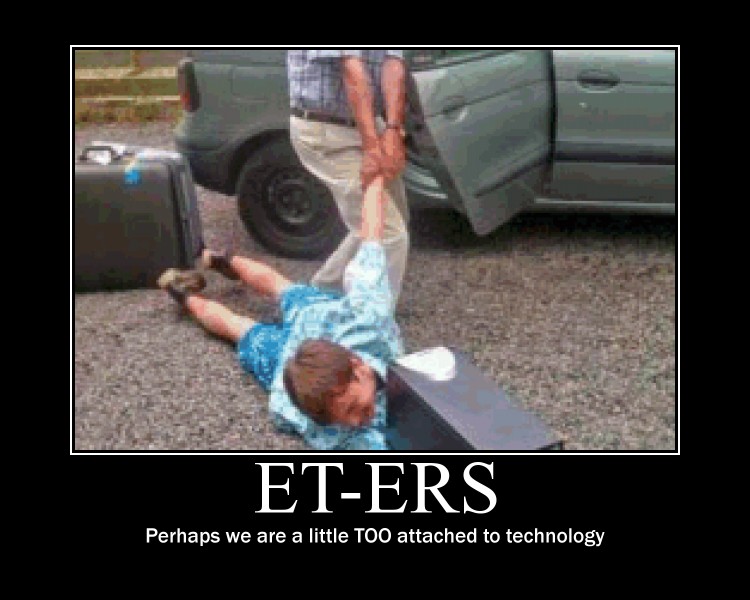Discussion Questions:
1. How does where you are today (your immediate culture) affect your own philosophy of education? Do you feel that Heidegger in “The Question Concerning Technology” is including YOU when he writes “We” ? Feel free to describe your immediate culture (physical location, position in your career) as well as your personal culture (historical, social) and briefly state your own philosophy of ET.
I think it is basically the whole nature vs. nurture idea. Our thoughts and beliefs are created not only from innate created biology but where we live, what we experience, how we deal with our unique situations. I think that where I am, how I lived my life, and where I’ve been has all helped shaped my own philosophy of education. I think this also includes who I’ve met. I think some of my greatest educational moments is meeting those people who really light a fire under you. My teacher mentors within the school where I first started working, my department head, who is close to retirement but remains as passionate about his subject as they day he started teaching. The fact that he still wants to be there for students both in the classroom and out has made a huge impact on me. This program has created a new fire and passion in my teaching. I want to use what I learn here and find that even though I am still a novice, I feel confident because there are others in the program to help support me.
I like how Heidegger uses “we” in his writing. I think it creates a sense of community, almost forcing you into agreement with him. His inclusion is a brilliant tactic. However, I do not think he is including me. I would like to think he is posing the “we” as a generality.
My culture – hmm hard to describe being Canadian and all…I was born in Winnipeg, Manitoba and moved all around Canada before the age of 10 when we settled in South Surrey, BC. My parents are from Toronto and that fact remains due to their dire love for the Maple Leafs. We are Irish heritage and really all that means to me is that I burn and freckle in the summertime. Our family is planning a pilgrimage to Ireland next summer; I hope to realize some long lost culture. However, I think it is the kindness of my parents, and the Canadian philosophy of life has shaped who I am.
My own personal philosophy of ET: Technology is an important part of today’s world and should be reflected in the classroom. I think technology should not be used because it’s “really cool looking” but because it fosters student learning. I believe ET should be about finding the best technologies, learning how to use them effectively in a manner that promotes constructivist ideals and active student learning. I also think that ET, like education in general, is a lifelong process that needs to be constantly updated and maintained.
2. Rephrase Heidegger’s last line in “The Question Concerning Technology” in your own words. FOR QUESTIONING IS THE PIETY OF THOUGHT.
My rephrase would be “questioning creates answers” I find the more I question the closer I get to answers or even other realizations or connections.
3. Social Media – Is it slipping from our control? But not human control, because it is run by a [human] corporation. Public as a default rather than Private as default is one issue many of us grapple with. How do you manage your use of social media? OR, Does using social media feel like a loss or gain of freedom/independence to you? Why? Please use a concrete example, providing the type of social media (multiple as necessary) you use.
I would like to think that technology does not control me. Just like in ET, it is not the technology that is the problem; it is how the person uses it. Thus, if social media is getting out of control it is our own fault. If you put information about yourself on the internet, expect your privacy to be effected. I think it is personal preference, but there is some social pressure to put ourselves onto these sites. I know that a few of my friends pressured our one friend to join Facebook because we found it easier to talk, and create meeting possibilities. I am not sure she even wanted to join, but did because we finally wore her down. Perhaps we should have thought about the reasons why she didn’t want to join in the first place.
I use Facebook, and I have strict privacy settings. I am not sure it is a loss or gain of freedom/independence. I like that fact that I can get updates on friends, but do they know I am thinking of them? Seems a little impersonal. I would like to think that I gain no new freedom from it, I am putting my thoughts on a webpage essentially. Does anyone care when I update my status to “having an awesome day”? Is it just a way to put into words our own personal feelings? I use Facebook to create group messages so I can get together with friends. I still enjoy talking and seeing them!
4. What are we limiting if we fall into Heidegger’s “enframing trap”? Put another way, what do we as educators need to consider when introducing new technology, given our own “uncreative” thinking tendencies?
I think we need to consider the SECTIONS model by Bates & Poole (2003) to assess the quality of the technology. As educators we need to collaborate. Collaboration leads to new ideas and more creativity! I know that my experience with the DLG proves that the creativity of the group enhances a presentation, a lesson, and how we incorporate technology into the classroom.
S “Students: what is known about the students – or potential students – and the appropriateness of the technology for this particular group or range of students?
E Ease of use and reliability: how easy is it for both teachers and students to use? How reliable and well tested is the technology?
C Costs: what is the cost structure of each technology? What is the unit cost per learner?
T Teaching and learning: what kinds of learning are needed? What instructional approaches will best meet these needs? What are the best technologies for supporting this teaching and learning?
I Interactivity: what kind of interaction does this technology enable?
O Organizational issues: what are the organizational requirements and the barriers to be removed before this technology can be used successfully? What changes in organization need to be made?
N Novelty: how new is this technology?
S Speed: how quickly can courses be mounted with this technology? How quickly can materials be changed?”
(A.W. Bates and G. Poole, 2003, pp. 79 – 80)
5. Compare Ellul’s view that freedom and technology are not compatible (Part 3), with Heidegger who attempts to ‘free” us from our relationship to technology in ‘The Question Concerning Technology’ (first para). Where do you stand? What’s your philosophy?
I like Heidegger’s attempt to “free” us. The way that I interpreted it would be that when we question and understand our use of technology, we are better able to use it in our own creative way. Freedom is an impactful word in Heidegger’s work. When we say we are “freeing” ourselves to me it sounds as if it is something we need to escape from. It is a strong word to use. I think that this freedom is brought about through understanding and something that has already been mentioned within our course – It is not about using technology, it is about understanding how its uses can be manipulated to better our surroundings. Like in ET, we are learning to use the more effective technologies to further develop meaningful learning in our students.


